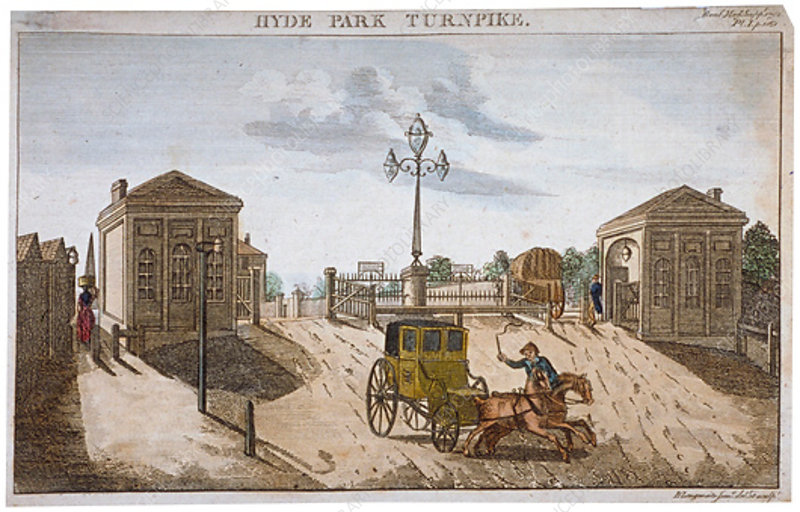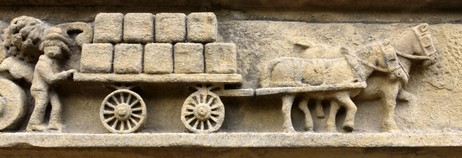This week's guest is writer Tim Vicary. This wonderful post first appeared on English Historical Fiction Authors and as I was researching doing my own post about the "Warming Pan Baby", I came across Tim's post and really couldn't go past it. So thank you to Tim for allowing us to reprint your post and for being our guest this week with a witty and insightful look at...
BABIES, WARMING PANS AND WARS
This is the story of a
baby who wasn't born at all - or at least, not when his mother said he was. (And
she wasn't his mother anyway, so what did she know?) That, amazingly, seems to
have been the view of many people in England at the time - perhaps the majority
view.
Or to put it another way, it's the story of sixty people - adult men and women - many of whom refused to believe their own eyes.
And so, to prove that this baby hadn't been born - even though it had happened right in front of their own eyes - they raised an army, invaded a country, and deposed a king.
So what was it all about?
 |
| James II |
Well, here's the story. In 1685, Charles II died, and his brother James became king. Unfortunately, King James II was a Roman Catholic. This made him hugely unpopular with most of the English ruling class, who hated and feared Catholicism - just as many people fear Islam today - so the idea of a Catholic king was anathema to them.
In Charles II's reign, there had been a determined attempt to exclude his brother James from the succession. As soon as James was crowned his Protestant nephew, the Duke of Monmouth, led a rebellion against him. When Monmouth was executed, James seemed secure. His opponents consoled themselves with the thought that James' heirs - his two daughters, Mary and Anne - were both loyal Anglicans with staunch Protestant husbands. So all they had to do was wait a few years for James to die and everything would be all right again.
 |
| Mary of Modena |
But then - oh dear - James' second wife, Mary of Modena, became pregnant. At first this wasn't too much of a worry because Mary was well into her forties and had suffered a number of miscarriages and still-births already.
But while her husband proceeded with his plans to reintroduce Catholic officers to his army and Catholic clergy into the universities, the baby in Mary's womb grew steadily bigger. The bigger her belly, the more the public worried. What if she gave birth to a Catholic prince? That would change everything. In their minds people saw a long line of Catholic kings stretching into the future.
Some of their fears were real, others imaginary. The real fears were that England could be plunged into religious war, like those which had convulsed Europe for the past century. Millions on both sides had been massacred. The English Civil War had been partly about religion. And just over the Channel, French Protestants - Huguenots - were being forcibly converted, imprisoned and tortured by the agents of King Louis XIV. Many fled to England with genuine tales of terror.
But there were imaginary terrors too.The reign of Charles II had been disfigured by fantasists like Titus Oates, whose lies about non-existent Catholic plots had sent many innocent men to the scaffold. Many believed the Great Fire of London, even the Plague, were spread by Catholics. To the London mob, Catholics were monsters, like Jews in Nazi Germany.
And here was the Queen about to give birth to one!It was such an awful thought that many people refused to believe it. After all, the last Catholic queen - Bloody Mary - had claimed she was pregnant too. And it had all turned out to be a fantasy, a dropsy, a joke. Surely this would be the same.
Plans were laid to ensure that 'unbiased' witnesses - respectable Protestants - would be on hand to witness the birth. The Archbishop of Canterbury, for instance, and King James' second daughter, Princess Anne.
.png) |
| Call the Ambulance! |
But the Queen went into labour a month early, while Princess Anne was still in Bath, taking the waters. On the evening of 9th June 1688, Queen Mary was playing cards in Whitehall until midnight. Then, as her labour started, an ambulance (a sedan chair!) was hurriedly called to carry her to St James' Palace and messengers were sent running hither and thither to summon help and witnesses. Lots of them. A really enormous number of people. Poor lady - she gave birth in front of no less than sixty people!!
She had two midwives, Mrs De Labadie and Mrs Wilkins, who each received 500 guineas. There were doctors too, and priests, and Lords of the Privy Council, and Ladies of the Bedchamber. Presumably the King was there too (a new man!) and a few servants to light the fire and change the sheets. If it had been possible to invite a TV crew they would have done that too, no doubt.
Or perhaps not.Because even though the Queen gave birth in as public a way as it is possible to imagine, many people still refused to believe it. Princess Anne said it must be a conspiracy to pretend the birth had come early while she was in Bath and couldn't witness it. The Archbishop of Canterbury had been arrested the day before (about something quite different) so he wasn't present either. And the royal obstetrician, Dr Hugh Chamberlen, missed the birth too because no-one could find him - he was attending another birth in Chatham.
 |
| Weapon of Mass Deception |
So there you are, people cried. It's obviously not true - it's a conspiracy, a fraud! (Dan Brown would have had a field day.) Gilbert Burnet, a prominent churchman, said the Queen had deliberately sent Dr Chamberlen away so that she could deceive everyone by smuggling in a changeling.
And why were so many of the witnesses Catholics? Why hadn't the King invited the Dutch ambassador, for instance? No, only a fool would believe the Queen had actually given birth as she claimed. The baby wasn't hers at all. They'd smuggled one into the bed in a warming pan.
Dr Burnet, who was in Holland at the time, was quite certain of this.
And so the evidence of sixty eye-witnesses counted for nothing. Not even the evidence of the vociferously Protestant midwife, Mrs Wilkins, who surely ought to know what had happened if anyone did. She protested to Dr Chamberlen: 'Alas, will they not let the poor infant alone! I am certain no such thing as the bringing of a strange child in a warming-pan could be practised without my seeing it; attending constantly in and about all the avenues of the chamber.'
Crazy, isn't it? People just believed what they wanted to believe. Nothing like that could happen today, surely? We're far more rational now. Ah, but bear with me. Here's a thought. Far-fetched, I admit, but still ...
Ten years ago, British and American soldiers invaded Iraq. (I told you my idea was far-fetched - a giant leap across centuries!) Why? Because Saddam Hussein had weapons of mass destruction. Almost everyone believed that; even the protesters. I certainly believed it, and so did George Bush and Tony Blair. I don't think they lied; they deceived themselves. They believed what they wanted to believe, because they were afraid of another, bigger 9/11.
Oh dear, I'm in seriously hot water now. Let's jump swiftly back to 1688. What happened as a result of this earlier bout of mass self-deception, this refusal to believe a baby prince had been born? Well, a large force gathered in Holland, sailed across the Channel and landed in Torbay, England. King James II fled, and was replaced, at Parliament's invitation, by his daughter, Mary, and her husband, William of Orange--the throne, with strings attached. This was the Glorious Revolution of 1688-1689.
So there you have it: the invasion of a foreign country, regime change, and a change in the balance of power between monarch and Parliament. Coincidence, or what? All because of a bout of self-deception.
Amazing what a warming pan can do. Especially when it wasn't there at all.
About Tim Vicary:.jpg) Tim Vicary is an award-winning author and a university teacher at the university of
York, England. His legal thrillers about a tough British barrister, Sarah
Newby, have been compared to the works of John Grisham and Scott Turow. The
second book in the series , A Fatal
Verdict, was awarded a B.R.A.G Medallion for an outstanding independent
novel in 2012 and is currently book of the month on http://www.e-thriller.com.
The third book, Bold Counsel, was awarded the Awesome Indies Seal of Excellence.
His four historical novels have also won praise.
Tim Vicary is an award-winning author and a university teacher at the university of
York, England. His legal thrillers about a tough British barrister, Sarah
Newby, have been compared to the works of John Grisham and Scott Turow. The
second book in the series , A Fatal
Verdict, was awarded a B.R.A.G Medallion for an outstanding independent
novel in 2012 and is currently book of the month on http://www.e-thriller.com.
The third book, Bold Counsel, was awarded the Awesome Indies Seal of Excellence.
His four historical novels have also won praise.
Tim has also written about twenty graded
readers for foreign learners of English, published by Oxford University Press.
In 2010 and 2011 two of these - Titanic and The Everest Story - were each the
winners in their category for the Language Learner Literature Award for the
Extensive Reading Foundation. Tim lives in the English countryside, near
York. When he's not writing he likes horse-riding, cycling, and swimming. For more about Tim, visit his website.
Tim's latest book, THE MONMOUTH SUMMER, is available from AMAZON
1685. King
Charles II dies unexpectedly, and is succeeded by his brother James II,
England's first Catholic monarch since Bloody Mary. English Protestants feel
threatened, and King Charles’s illegitimate son, the handsome young duke of
Monmouth, rises against his uncle in armed rebellion.
The rebellion
turns young Ann Carter’s world upside down. Eighteen years old, she is
betrothed to Tom Goodchild, a Protestant shoemaker; but secretly loves Robert
Pole, an officer in King James’s army, who offers to take her to London as his
mistress. Ann knows it is her duty to marry Tom, but does not love him; so when
he marches away with the rebels, she imagines him being killed – which would
set her free. But she knows such thoughts are wicked; her father is a rebel soldier
too, like all the men of her village. So who should she pray for, when musket
balls start to fly? What matters most – love or loyalty?
If God could see
into my heart, she wonders, what would He tell me to do?
Her father, Adam,
is a brave man tormented by fear. He has two fears: first, that he may be a
coward, and run from the enemy; and second, that he is not one of God’s Elect,
and will go to Hell when he dies. But like all the men of Colyton, ‘England’s
most rebellious town’, he marches to war, risking his life for what he
believes.
When England’s
most notorious judge, Judge Jeffreys, is sent to punish the rebels, Ann and her
father are faced with the hardest choices of all.













.jpg)


